Looking for a lightweight and powerful battery for your drone or RC model? 3S LiPo battery (11.1V) is often the first choice. But do you really know how to use it safely and effectively? This guide aims to answer all the core questions about 3S LiPo batteries, covering the entire life cycle from purchase to disposal, to help you become a knowledgeable and responsible user.
Table of Contents
ToggleWhat is 3S Lipo Battery
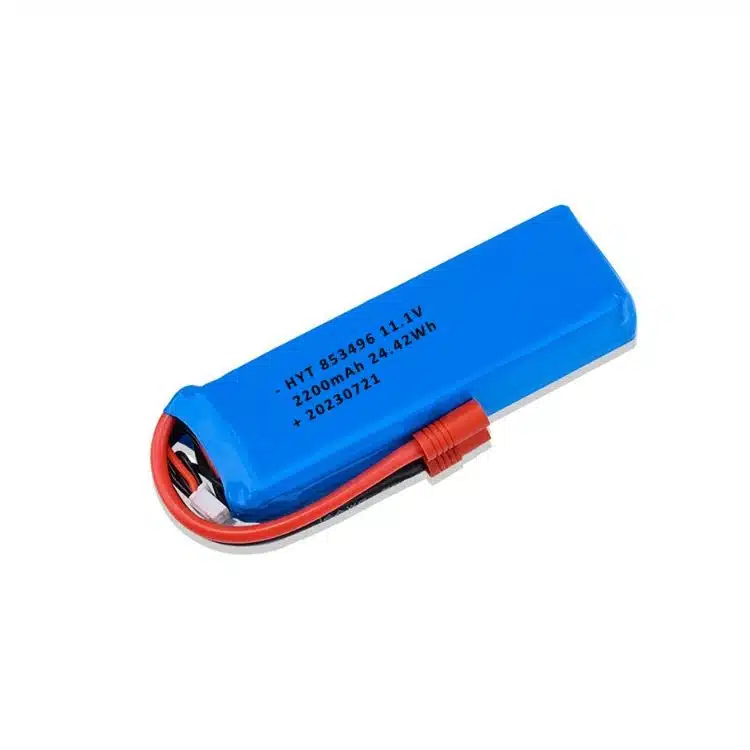
Advantages and disadvantages of 3S Li-polymer batteries
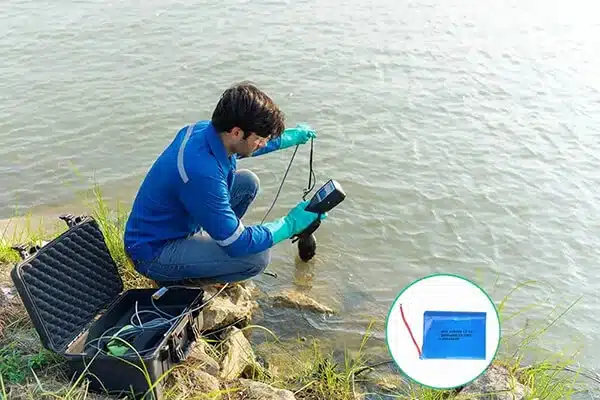
Before we dive into the technical specs and how-tos, let’s quickly weigh the pros and cons of 3S LiPo batteries to give you a better understanding of the various aspects that need to be considered when using this type of battery.
Advantage:
Compared to traditional NiMH batteries, LiPo has a higher energy density and can store more energy in the same weight or volume. This allows you to play with your remote control car or drone for longer. They are lighter, which helps improve the flexibility and overall performance of the model, especially in aircraft.
High discharge rate. LiPo batteries can release a lot of current very quickly, providing the kind of powerful power needed for racing drones or high-powered remote control cars.
Stable voltage. During discharge, LiPo batteries maintain a relatively stable voltage output, allowing your device to maintain strong performance until the battery is almost exhausted.
The core advantages of 3-series polymer batteries lie in their performance, power and superior power-to-weight ratio.
Shortcoming:
The most significant disadvantage is the safety risk. Improper use, such as overcharging, over-discharging, physical damage (such as puncture, impact) or short circuit, can cause the battery to overheat, bulge, catch fire or even explode. When handling LiPo batteries, you need to strictly follow safety operating regulations.
It requires a special charger. It needs to use a specific charger that supports the LiPo chemistry system and needs to have a balanced charging function. Balanced charging ensures that every cell in the battery pack maintains the same voltage, which is extremely critical to the safety and life of the battery.
Relatively fragile. The battery core itself is soft-packed and can be easily pierced or squeezed by sharp objects. Even a single explosion or accidental drop of the model can cause damage to the internal battery.
Relatively short lifespan. LiPo batteries have a fixed number of charge and discharge cycles, which are greatly affected by how you use, charge, and store them. For example, keeping the battery fully charged or completely discharged for a long time, or exposing it to extremely high or low temperatures, will significantly shorten its lifespan.
High cost. The cost of lithium polymer batteries is generally higher than that of 18650 batteries.
Know your 3S LiPo battery
The nominal voltage is 11.1V, and the voltage of a single polymer battery is 3.7V, so 3.7V * 3 = 11.1V.
The full charge voltage is 14.8V, and the full charge voltage of a single lithium polymer battery is 4.2V, so 4.2V * 3 = 14.8V.
The discharge cut-off voltage is 9V, which is also the lowest safe voltage. Usually a single cell is not less than 3.0V, so 3V * 3 = 9V.
The storage voltage is about 11.4V. The ideal storage voltage of a single battery is 3.8V, so 3.8V * 3 = 11.4V.
The unit of capacity is mAh or Ah. The size of the capacity directly determines how long the battery can be used.
The discharge rate, in C, is how fast the battery can safely release energy. A 2200mAh 5C battery can theoretically provide a maximum current of 2.2A * 5 = 11A.
Connector type, common 3S polymer battery terminals are XT60, Deans, EC3/EC5. We can match the corresponding plug according to the female terminal on the motherboard of your device.
Internal resistance, measured in milliohms, reflects the degree of resistance to current flow inside the battery. Generally, the lower the internal resistance, the better the battery performance. The internal resistance will gradually increase as the battery is used and ages.
How to choose the best 3S LiPo battery
You can translate the above battery parameters into a specific purchasing decision. Here are the key factors you must consider when making your choice.
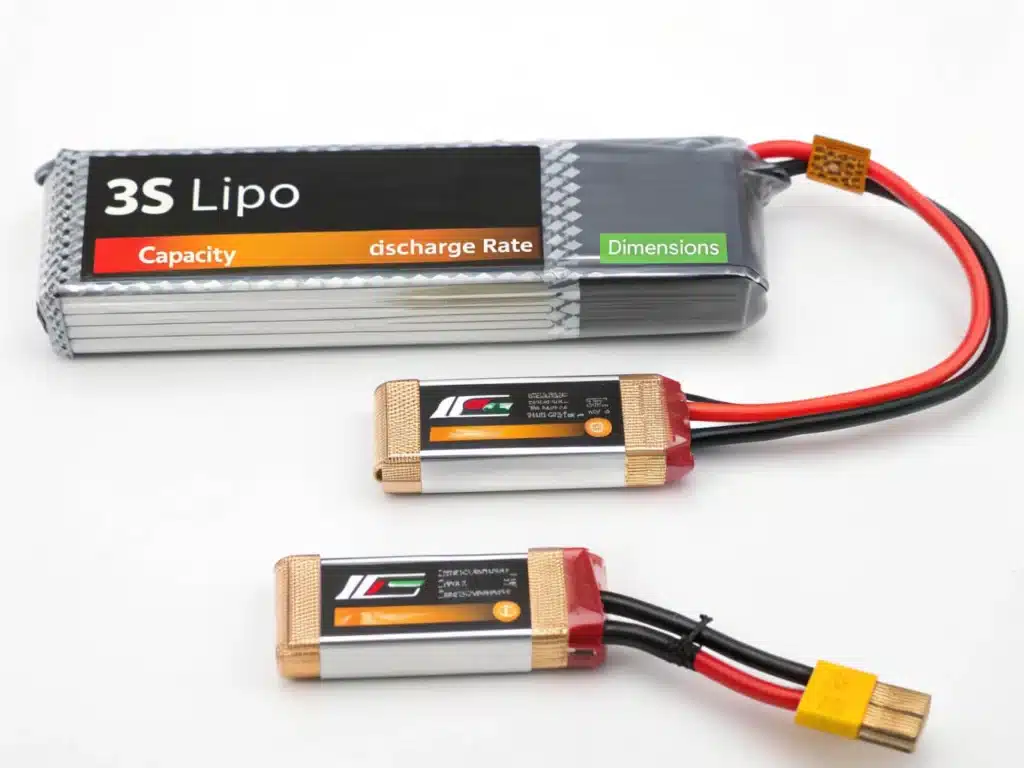
- Device compatibility, confirm that your device specifically requires a 3S (11.1V) battery, take out a ruler and measure your device’s battery compartment (length, width, height) to ensure that the battery can be built into the battery compartment and there is still some space.
- Capacity determines battery life. Higher capacity (mAh) usually means longer operating time. You need to make a trade-off between battery life and weight, depending on whether you value ultra-long battery life or lighter and more flexible handling.
- Discharge rate requirements. You need to know how much current your equipment (mainly motors and ESCs) requires at maximum load. The battery’s continuous discharge capacity (capacity Ah x C number) must be greater than the peak current. If the discharge rate C number is too small, the battery will have excessive voltage drop, severe heat generation, and performance degradation at high loads.
- Physical dimensions and weight. Be sure to double-check their specific dimensions and weight to make sure they fit within the battery compartment limits you measured earlier and are within your acceptable weight range.
- Matching connectors. Check which mains connector your device and charger use, and try to choose a battery that matches it, such as the common JST-XH terminal.
- Brand, quality and budget. The brand and quality of the battery are directly related to the stability and safety of the performance. Try to choose a brand with a good reputation. Hongyitai is a professional lithium battery factory in China.
Choosing a good 3S LiPo battery is a process of comprehensive consideration and weighing the pros and cons. You need to find the best balance between capacity, discharge rate, size, weight, quality and price according to your needs and your budget. Welcome to check out our 11.1V lipo batteries.
How to safely charge a 3s 11.1v lipo battery
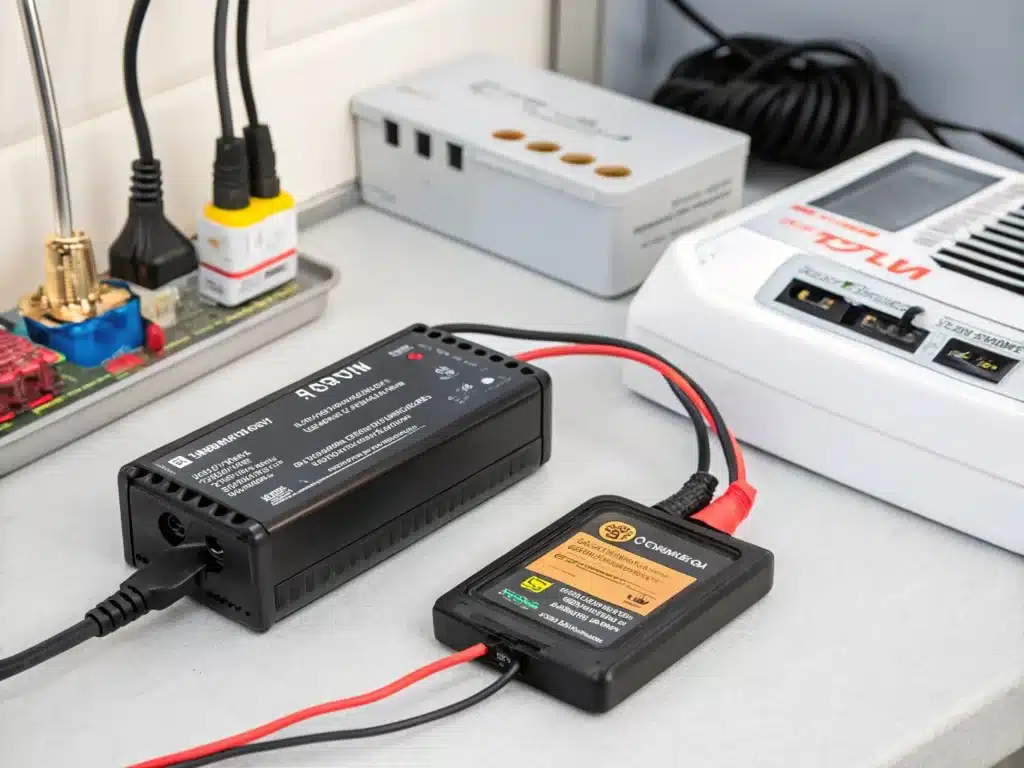
You must use a charger designed specifically for LiPo batteries and it must have a balance charging function.
In case something unexpected happens to the battery during charging (such as overheating or fire), a LiPo safety bag or fireproof container can control the fire to a certain extent and buy you time to react.
In the charger menu, always make sure you have selected the ‘LiPo’ (or ‘LiPoly’) chemistry type. Selecting the wrong mode (e.g. NiMH, NiCd) will result in incorrect charging parameters, which is extremely dangerous.
The correct number of cells to set the battery to is 3S.
Set the charging current, generally between 1/3 and 1/2 of the battery capacity.
It is recommended to use the Balance Charge mode, which monitors and adjusts the voltage of each battery cell through the balancing function to ensure that their voltages are consistent at the end of charging.
Connect the battery’s main power connector (such as XT60) and the balance head (the small white plug) firmly to the corresponding ports on the charger, and then start charging.
Never leave a LiPo battery unattended while it is charging. Disconnect the battery from the charger as soon as the charger indicates charging is complete.
Never charge a swollen or damaged battery. Such a battery may be internally unstable and charging it is extremely dangerous.
3S Lipo battery safe use and discharge
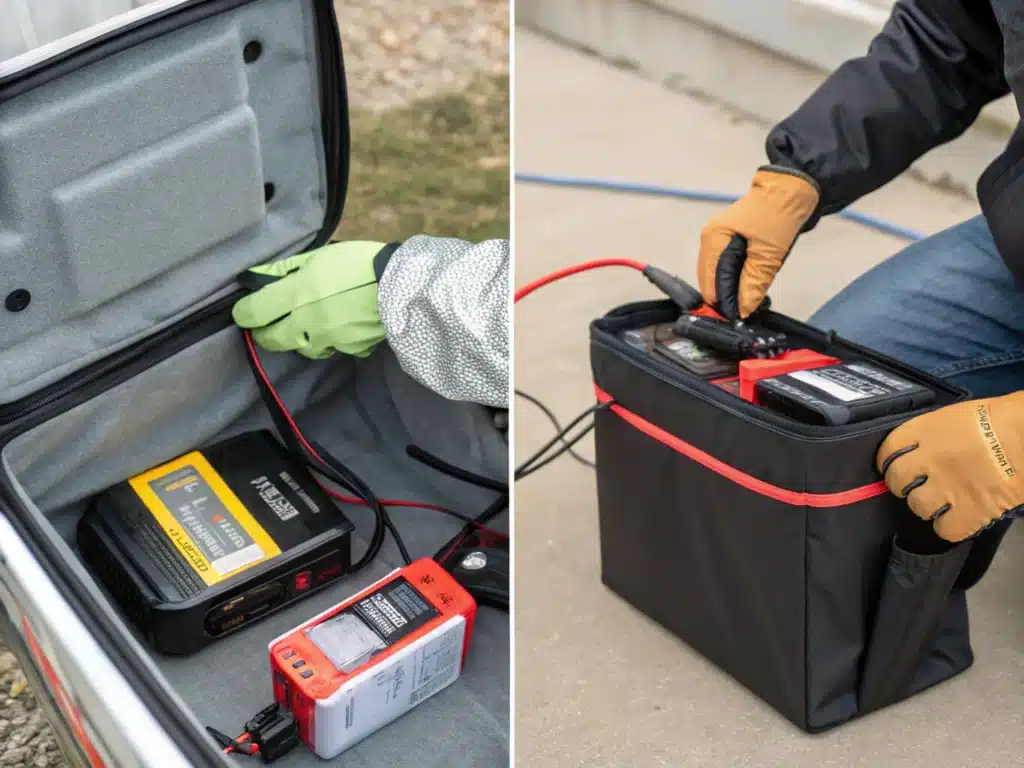
When using batteries, how to ensure that the batteries can perform well while maintaining health and safety? Here are some specific practical suggestions:
Check before first use. Make sure there are no bulges or damages during transportation or storage. Check if the joints are intact and not loose or damaged.
Match the power requirements of your device. Confirm again that the C number (discharge rate) of the battery you choose can meet the maximum current requirements of your device. If you feel insufficient power, the battery is abnormally hot, or the device frequently issues low voltage warnings during flight or driving, this may be a sign that the battery discharge rate is insufficient.
Prevent over-discharge. The most feared thing about LiPo batteries is over-discharge, that is, the voltage is lower than its safety limit. The voltage of a single cell should never be lower than 3.0V, and it is safer to keep it above 3.3V. For 3S batteries, this means that the total voltage should not be lower than 9.9V, and the absolute limit is 9.0V.
Physical protection during use. When installing the battery, make sure it is fixed in the battery compartment and will not shake or be squeezed. After a collision or explosion, be sure to carefully check whether the battery is deformed or damaged.
Post-use treatment: The battery should be allowed to cool naturally to room temperature before charging or handling according to storage voltage requirements.
3S polymer battery storage and maintenance
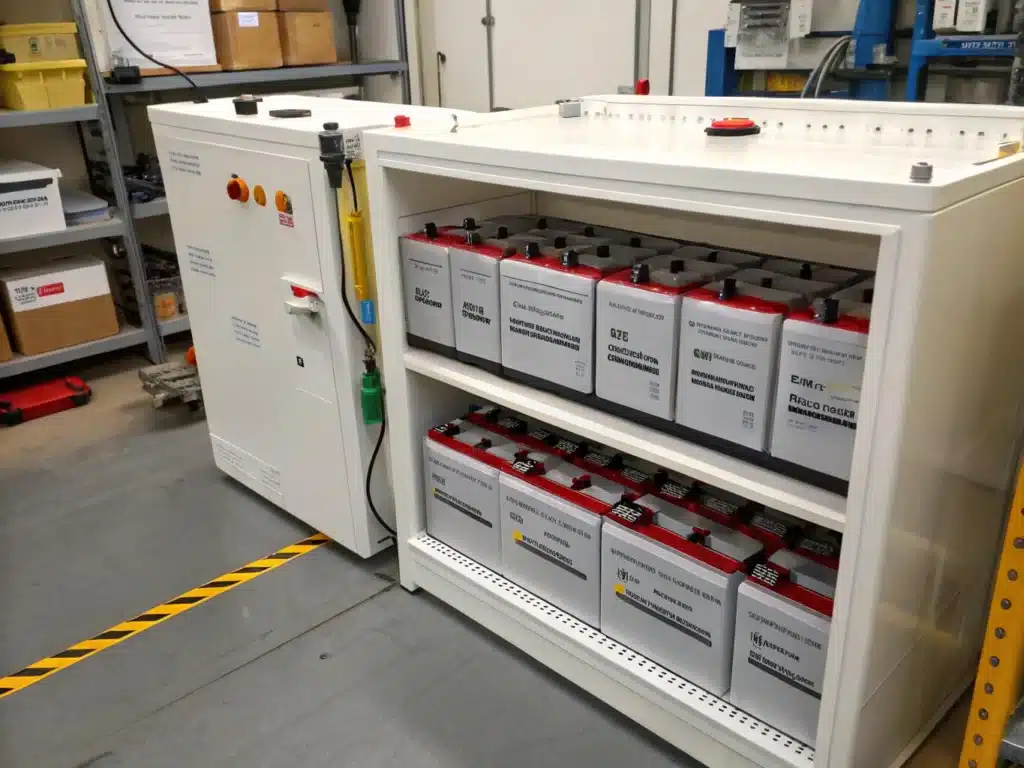
The chemical properties of LiPo batteries determine that their long-term storage stability is different at different voltages. Long-term storage at full charge will accelerate the activity of the chemical substances inside the battery, causing the capacity to decay faster and making it more prone to bulging.
Likewise, long-term storage of depleted batteries may cause the battery cell voltage to be too low, resulting in irreversible damage, and the battery may no longer be able to be charged.
For the health and safety of your battery, it is recommended to adjust the storage voltage to between 11.4V and 11.55V when not in use for a long time. Because the ideal storage voltage of a single cell is 3.80V to 3.85V. At this voltage, the internal chemical state of the battery is the most stable.
The simplest and most recommended method is to use a balance charger to charge or discharge to the ideal storage voltage.
Store in a cool and dry place, avoid high temperature and humidity. Keep away from flammable items and out of reach of children and pets.
For batteries that are stored for a long time, it is recommended to check the appearance of the battery regularly (for example, every 3 months). At the same time, use an external meter to measure the voltage. If the voltage is too low, you need to recharge it in time.
Keep the connectors clean. Check the battery’s main power connector and balancing connector for dirt, oxidation, or damage.
If you find that the battery has any degree of swelling (even slight), physical damage (broken outer shell, deformed by impact, signs of liquid leakage), or has experienced a serious drop/impact, you must stop using the battery immediately. Carefully remove the problematic battery from the device and immediately move the problematic battery to a safe place that is isolated from flammable materials.
Safe disposal of 3S Lipo batteries
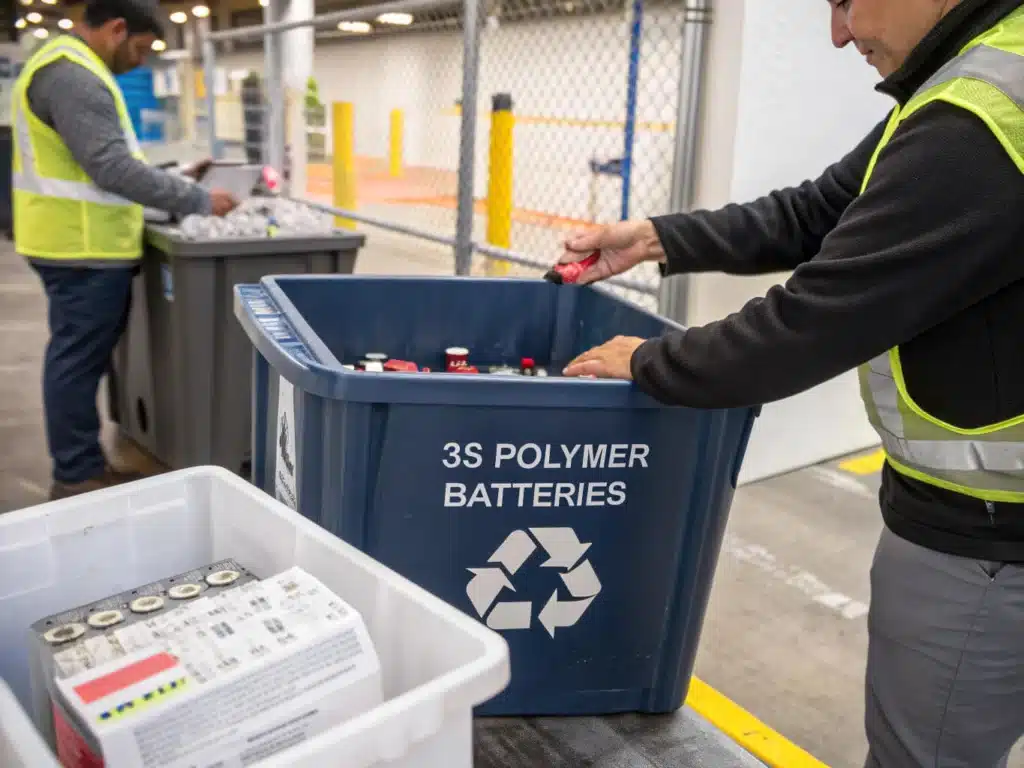
When your LiPo battery is aged normally or damaged, how to dispose of it in a safe and environmentally friendly way? The following are specific disposal methods.
LiPo batteries contain lithium and other chemicals, which can pollute soil and water sources if discarded carelessly.
Before final disposal, it is important to ensure that the battery is fully discharged to 0 volts (0V). Only fully discharged LiPo batteries are considered to be less susceptible to thermal runaway and thus safer for subsequent disposal.
Safe and complete discharge method
Use the discharge of the charger. Connect the battery to your LiPo charger and select the discharge mode. Set a lower cut-off voltage and set a very small discharge current. Most chargers usually do not discharge the voltage to 0V in order to protect the battery, and need to be combined with other methods to discharge it completely.
Resistive load discharge method. This is a common and effective method to reduce the voltage to close to 0V. By connecting a suitable resistive load (such as a 12V car taillight bulb, the power does not need to be too large, such as 5W-20W) to the main connector of the battery, the remaining power of the battery is consumed through the bulb.
Once you have confirmed that the battery voltage is 0V, contact your local professional recycling agency or Call2Recycle to have the battery enter the correct recycling or disposal process.
Summarize
Always use a dedicated balance charger and monitor charging in a fireproof environment to prevent over-discharge, over-current and physical damage during use. When not in use for a long time, it must be adjusted to the storage voltage (about 11.5V) and stored in a LiPo safety bag or fireproof box. Once any signs of bulging or damage are found, it must be stopped immediately, safely isolated, and finally recycled through professional channels after being completely discharged to 0V. Never discard it at will.
Respect the characteristics of LiPo batteries and strictly follow these safety specifications to keep your batteries working safely.
FAQs
It mainly depends on the device's power (voltage and current) requirements. You need to check the voltage range required by the device and make sure the device can accept the voltage provided by the 3S battery (9V~12.6V). In addition, you also need to make sure that the battery's capacity and maximum discharge current can meet the device's power requirements.
Overcharging 3S LiPo batteries can cause overheating, swelling, and even fire or explosion. If the charging voltage exceeds 12.6V, additional chemical reactions may occur inside the battery, reducing battery performance and shortening cycle life. We recommend using a smart charger with overcharge protection and avoid connecting the battery to the charger for long periods of time.
It is recommended to store the battery in a dry, cool place and avoid exposure to high temperature or humidity. Before storage, the battery should be charged to about 40%-60% (about 11.4V) to prevent over-discharge. When storing, it is best to put the battery in a special fireproof bag or storage container to ensure safety. If the battery is not used for a long time, charge and discharge it properly every 3 months to maintain the healthy activity of the battery.
3S LiPo batteries will generate a small amount of heat during charging, which is normal. However, if the battery overheats, there may be a problem with the charging process. If overheating occurs, please follow the steps below:
Check the charger: Make sure the charger is compatible with the battery and that the charger is set at the appropriate current.
Check the charging environment: Make sure the battery is placed in a well-ventilated area and avoid charging in a high temperature environment.
Check the battery status: If the battery itself shows signs of swelling or other damage, stop charging immediately and dispose of it properly. Overheating may be a sign of battery aging or damage. If the battery is severely overheated, stop using it and replace it.
